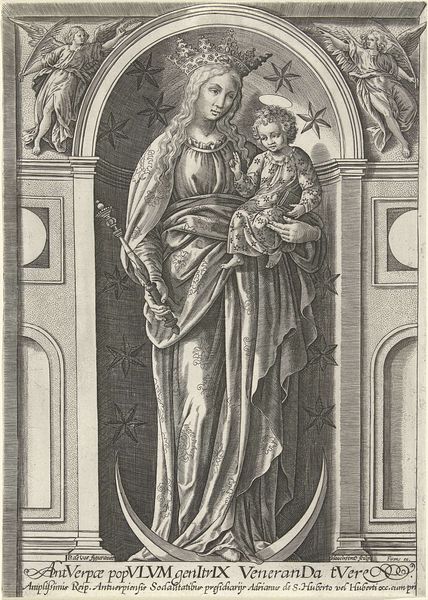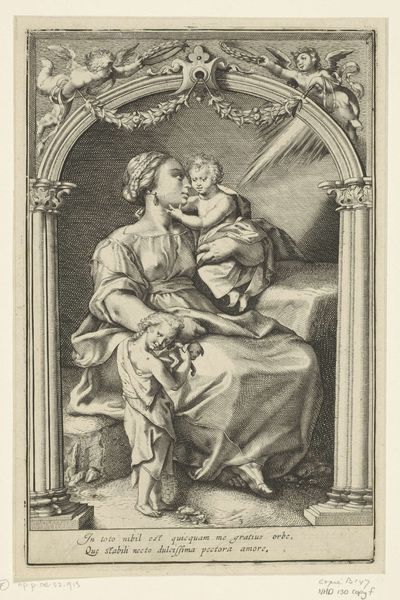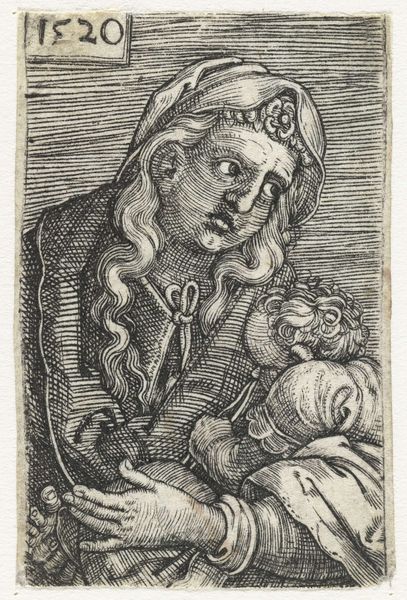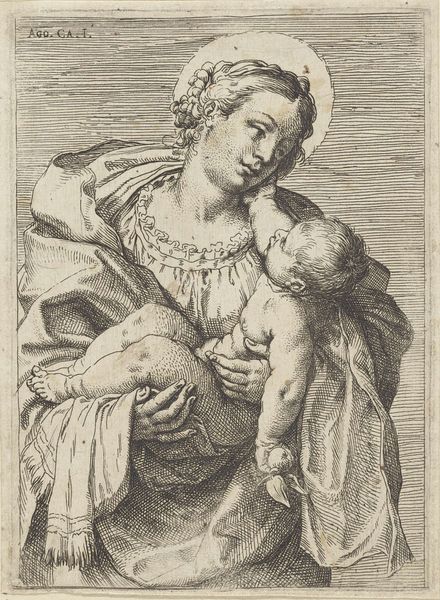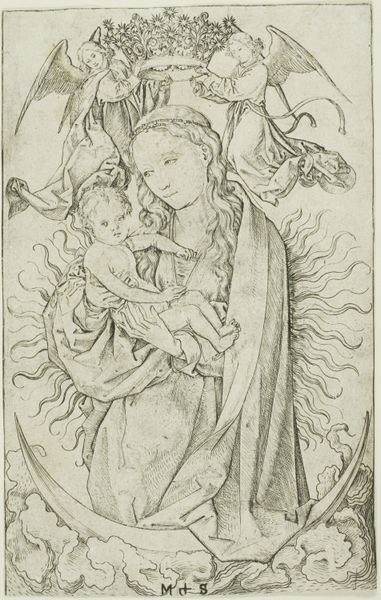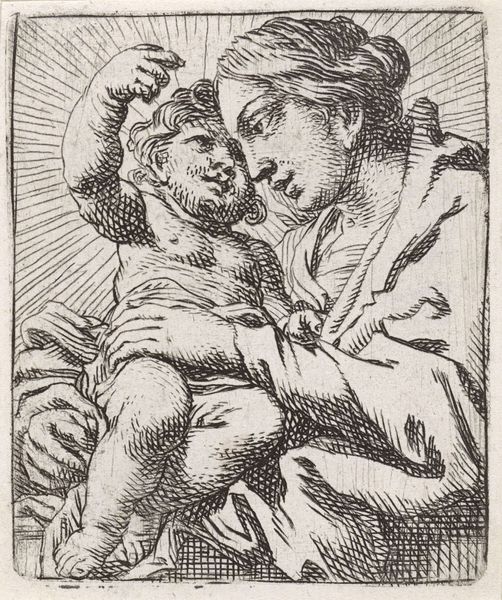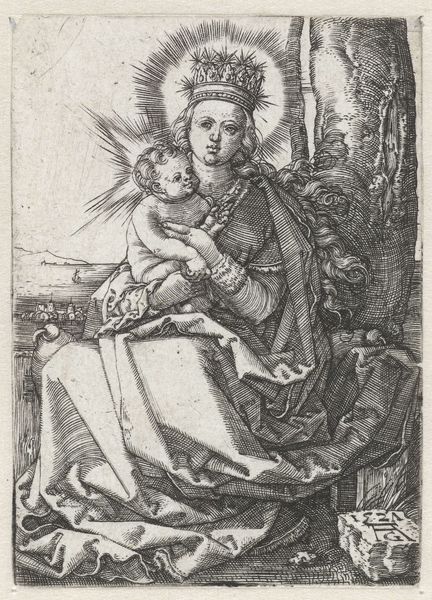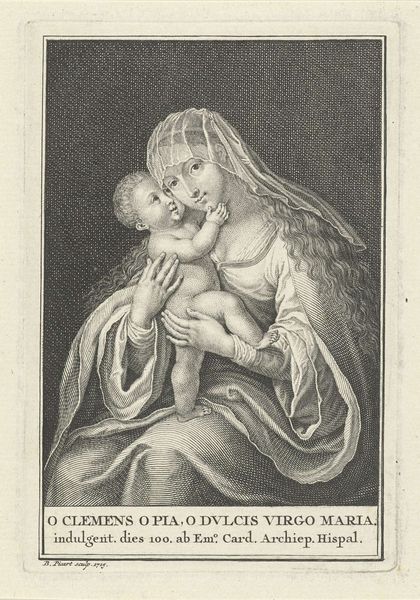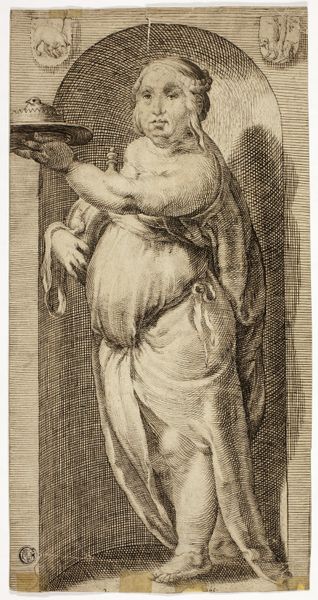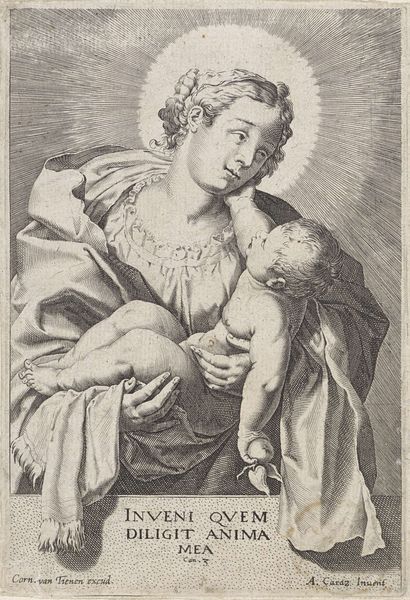
drawing, print, intaglio, paper, engraving
#
portrait
#
pencil drawn
#
drawing
#
medieval
# print
#
intaglio
#
paper
#
portrait drawing
#
northern-renaissance
#
engraving
Dimensions: 56 × 38 mm (image/plate/sheet)
Copyright: Public Domain
Curator: Look at the tenderness in this small engraving, "The Virgin with Child and Vase," by Barthel Beham. Its creation date remains unknown, but the work itself speaks volumes. Editor: It has a powerfully intimate feeling. The tight embrace, the averted gaze… a mood of both comfort and melancholic quiet. Curator: Beham, working in 16th-century Nuremberg, produced prints like these within a highly regulated system. Printmaking, like most artistic endeavors, was subject to guild control, municipal laws, and patronage demands. We need to see these devotional images within that network of power. Editor: Right, but think about the symbolic language, too. The vase, likely holding lilies, evokes Mary’s purity, but also the enclosed garden, the hortus conclusus, a classical and biblical symbol referencing both the Virgin and her virginity, a space untouched. Curator: It’s a complex play of personal devotion and public display. The art market was expanding; printed images allowed for a wider circulation of these icons, but the artist was also positioning himself, building a reputation within a competitive environment. Editor: Absolutely. The circular composition reinforces this intimacy. Everything is held close, drawing us into this world of maternal affection… the textures are remarkable too, it all feels rather tactile for such a tiny piece of work. The very smallness almost increases the sense of preciousness. Curator: Beham's skills as an engraver are clear; consider how the fine lines create depth and shadow, the way the texture on Mary's dress is achieved. This wasn't simply replicating imagery; this was showcasing technical prowess for a knowledgeable audience. It makes me wonder about Beham’s relationship to the Reformation. How would these Catholic images be received in a city increasingly leaning toward Protestantism? Editor: Yes! And look at the face of the Christ Child; it has a world-weariness that belies his youth; again, we’re being prompted to think ahead to his future destiny. He knows something, even in infancy, this gives the print so much of its quiet sadness. Curator: Exactly, art served ideological functions whether artists intended it or not. Considering works like these helps us question traditional narratives and view religious art not just as illustrations of faith but reflections of power, societal anxiety, and shifting beliefs. Editor: Beautifully stated; and now I am left wondering, who was this meant for? Who held this image and found solace or inspiration within its fine lines?
Comments
No comments
Be the first to comment and join the conversation on the ultimate creative platform.

